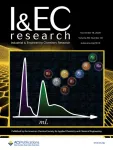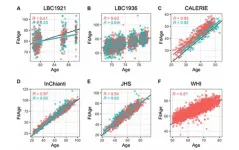(Press-News.org) Gradually re-introducing primates into the wild with post-release support has, for the first time, been scientifically shown to improve their well-being.
Every year, rescue centres release animals, that are deemed ready, into the wild, based on the assumption that the animals will thrive most in their natural habitat, but this assumption has never been scientifically tested with primates.
A team from Durham University, Disney’s Animals, Science and Environment and the Jane Goodall Institute has shown that a group of mandrills, who were returned to the wild using a careful phased approach, adapted well.
After being released back into their natural habitat, the animals’ stress response was lower in the wild than it had been when they lived at the sanctuary.
The research is published in the academic journal Conservation Physiology.
When animals are released into the wild, it is important to keep their stress response low as an animal which is stressed may struggle to thrive in the new environment. This can mean the release fails and the animal must be brought back into human care, or worse, that it doesn’t survive.
The study suggests that a carefully planned release, using a pre-release enclosure and varied types of support after release, can work well for wild-born, orphaned mandrills who have been rehabilitated in a sanctuary.
Primate re-introduction guidelines set by the International Union for Conservation of Nature (IUCN) recommend a gradual release and post-release monitoring, but this is often not achieved due to cost and time restrictions.
The authors say their study provides evidence that this very slow and steady process is key to the success of re-introductions and for the well-being of the animals.
The release process involved the mandrills spending time in a pre-release enclosure built in the forest, extra food, observations of the animals’ condition, and interventions to remove animals that were not doing well.
Professor Jo Setchell, from the Department of Anthropology at Durham University, led the research. She said: “Many primate releases are conducted based on the assumption that it improves animal welfare, but very few studies have actually tested this.
“Our work applies rigorous science to this assumption, providing evidence that a carefully planned release of mandrills can work well with the right design, monitoring and evaluation.”
The rescued mandrills observed in this study had been orphaned by hunting and rescued by the Congolese authorities. Hunting for meat is one of the major threats to mandrill conservation.
Like many primate translocations, this project was primarily motivated by improving primate welfare. Wild mandrills do not yet need population reinforcement. However, with populations of approximately 70 per cent of primate species in decline, successful re-introduction will become increasingly important in the future.
Working in the Republic of Congo, the team transferred 15 mandrills from the Tchimpounga Sanctuary to a pre-release enclosure in Conkouati-Douli National Park, and then into the park itself. They collected faecal samples from the mandrills at every stage of the transfer, which they then used to measure their stress response. Using faeces allowed the team to measure the mandrills’ stress response non-invasively.
The animals’ stress response initially increased after their move from the sanctuary to the pre-release enclosure, showing that the move, which involved being transported in crates by car and boat, was stressful, as the researchers expected it would be.
Crucially, however, the mandrills’ stress response dropped again over time in the pre-release enclosure, which gave the mandrills a safe place to adjust to their new environment.
To the researchers’ surprise, the mandrills’ stress response didn’t increase when the mandrills were released into the forest.
Just one month after they were released into the wild, the mandrills’ stress response dropped below the levels seen while they were in the sanctuary. After one year in the wild, the mandrills’ stress response was about half what it had been in the sanctuary, suggesting that the mandrills were doing well in the wild.
Dr Miles Woodruff was the Principal Investigator of the Mandrill Reintroduction Project at the Jane Goodall Institute who conducted this study as part of his now completed PhD at Durham University.
He said: “This project was ultimately successful because of years of pre-release preparation and extensive post-release support. We went to the extreme lengths to conduct this study because it's important that all releases are learnt from and the results are reported.
“We are dealing with the life and death of critical species in sensitive environments and every individual matters. Our findings are very exciting because we now have physiological evidence to support the 'why' behind the IUCN’s suggestions to conduct soft releases of animals.”
Of the 15 mandrills released, all survived and two infants were born, but three of the original group were returned to the sanctuary as their transfer was not successful.
The research was funded by the Jane Goodall Institute and private donors.
END
Gradual supported release of primates into the wild shown as effective
2023-06-08
ELSE PRESS RELEASES FROM THIS DATE:
Essential investment in plant and microbial research in Norwich, UK, confirmed
2023-06-08
Development of an exciting, ground-breaking plant and microbial science and innovation hub can go ahead with confirmation of funding announced today.
The transformational investment will fund new cutting-edge, world-class facilities for the John Innes Centre (JIC) and The Sainsbury Laboratory (TSL) at the heart of the Norwich Research Park. This will deliver a step change in our capability to translate scientific knowledge into bio-based solutions in response to some of society’s most pressing challenges.
As well as transforming the existing capabilities of the John Innes Centre and The Sainsbury Laboratory, both internationally recognised ...
Despite major progress nationally, two mercury emissions hotspots remain
2023-06-07
Missing from partisan political debates over regulations affecting the energy sector is the stunning success of the federal government’s signature environmental laws. A prime example: the U.S. Environmental Protection Agency’s rules aimed at reducing the harmful effects of hazardous air pollutant (HAP) emissions from fossil fuel-fired power plants known as the Mercury and Air Toxics Standards, or MATS.
A new study from the Harvard John A. Paulson School of Engineering and Applied Sciences (SEAS) shows that in the decade since the standard was ...
What your likes, posts really say about you
2023-06-07
The myriad ways in which we use social media can be grouped into four broad categories, each of which is associated with a cluster of specific personality and behavioral traits, suggests new research from Washington University in St. Louis.
“Social media is here to stay, so clarifying how people use social media and raising awareness of these findings are crucial first steps toward ultimately helping people understand how they can avoid the negative aspects of social networking and engage in healthier social media usage,” said Alison B. Tuck, first author of the study and a PhD candidate in clinical psychology in Arts & Sciences.
The study, published online ...
Scientists develop inorganic resins for generating and purifying radium and actinium
2023-06-07
The Science
Targeted alpha therapy can destroy cancerous cells without harming healthy cells. It’s especially useful for treating metastasized cancers. The Department of Energy (DOE) Office of Science’s Isotope Program is developing and marketing novel radioactive isotopes for targeted alpha therapy. One method of making one isotope, actinium-225, involves bombarding radium targets with neutrons. This method poses a challenge: how to chemically separate the radium from the actinium. This can destroy typical separation equipment due to a radioactive process called alpha decay. Now, researchers ...
New research: Maybe crying in baseball is a good thing?
2023-06-07
ITHACA, N.Y. – Venturing out of one’s comfort zone to perform a task – and then performing poorly in that task, such as a baseball pitcher trying to hit – can lead to better performance when returning to one’s specialty, according to new research.
Brittany Bond, an assistant professor of organizational behavior in the Cornell School of Industrial and Labor Relations, and Ethan J. Poskanzer of the University of Colorado argue that this phenomenon occurs through a process they call “forced task inferiority,” in which underperformance in tasks outside their specialty frustrates ...
Electronic health records can contain bias, potentially impacting clinical trials
2023-06-07
Results of clinical trials are only as good as the data upon which they rest. This is especially true in terms of diversity — if most people in a trial are from a certain race or socioeconomic group, then the results may not be broadly applicable.
This form of potential bias is not a novel concept. But a group of researchers at the University of Illinois Chicago and colleagues have identified a potential hidden source of bias: electronic health records.
In a recent Contemporary Clinical ...
Yale-led study shows ‘significant overall survival benefit’ when lung-cancer drug is taken after surgery
2023-06-07
New Haven, Conn. — A clinical trial led by Yale Cancer Center shows that the drug osimertinib, a targeted therapy for non-small cell lung cancer, improved rates of survival and reduced risk of recurrence in patients after surgery.
The results, published June 4 in the New England Journal of Medicine, were presented this week by Dr. Roy Herbst, deputy director of Yale Cancer Center and principal investigator of the ADAURA Phase III clinical trial, during the 2023 annual meeting of the American Society of Clinical Oncology. Herbst is also assistant dean for translational research, ensign professor of medicine (medical oncology), ...
Temptation at the checkout: 70% of food, drinks within arm’s reach are unhealthy
2023-06-07
We’ve all been there: waiting in line at a store checkout, surrounded by tempting snacks and drinks. Navigating the checkout lane in search of healthy options could be a challenge, according to researchers at the University of California, Davis, who found that 70% of foods and beverages at checkout are unhealthy.
For snack-sized options, an even higher proportion were unhealthy — 89%.
A study published this month in the journal Current Developments in Nutrition suggests most food and beverage options at checkout consist of candy (31%), sugar-sweetened beverages (11%), salty snacks (9%) and sweets (6%).
Healthy ...
Devastating heart condition can be reversed, study shows for the first time
2023-06-07
Three men who had heart failure caused by the build-up of sticky, toxic proteins are now free of symptoms after their condition spontaneously reversed in an unprecedented case described by a team at UCL (University College London) and the Royal Free Hospital.
The condition, a form of amyloidosis affecting the heart, is progressive and has until now been seen as irreversible, with half of patients dying within four years of diagnosis.
The new study, published as a letter in The New England Journal of Medicine, reports ...
DNAmFitAge: Biological age indicator incorporating physical fitness
2023-06-07
“We expect DNAmFitAge will be a useful biomarker for quantifying fitness benefits at an epigenetic level and can be used to evaluate exercise-based interventions.”
BUFFALO, NY- June 7, 2023 – A new research paper was published in Aging (listed by MEDLINE/PubMed as "Aging (Albany NY)" and "Aging-US" by Web of Science) Volume 15, Issue 10, entitled, “DNAmFitAge: biological age indicator incorporating physical fitness.”
Physical fitness is a well-known correlate of health and the aging ...




